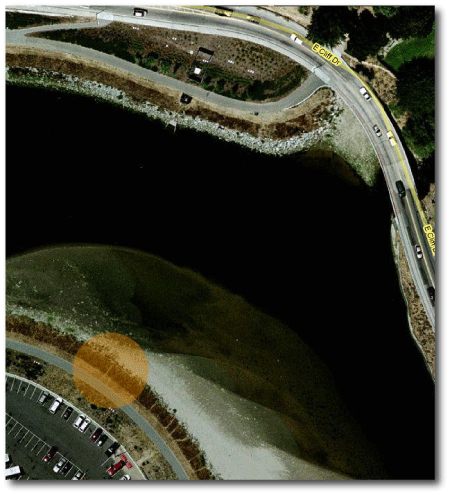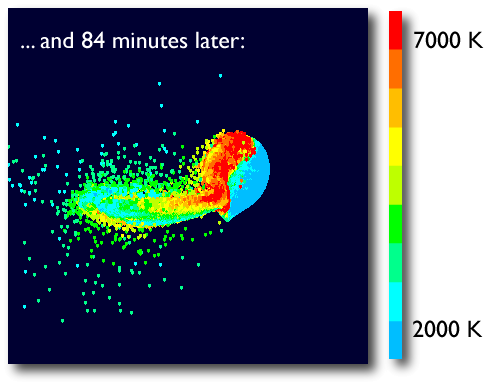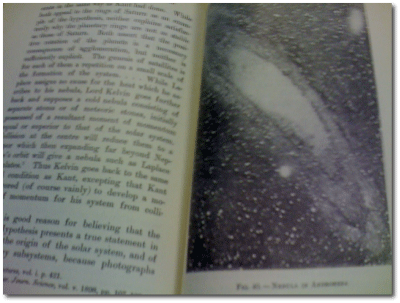
Image Source.
The last mile of the San Lorenzo river in Santa Cruz is strongly affected by the twice-daily ebb and flow of the tides.

It’s always startling to see the tidal bore, a solitary breaking wave that runs upstream at a ~8 minute per mile pace when the tide is coming in. The San Lorenzo bore is small, usually six to nine inches high, but dramatic nonetheless. In its wake, there’s a turbulent froth of whitewater, whose eddies eventually cascade into viscous dissipation, turning the kinetic energy of organized flow into a slight heating of the water. As the Moon recedes, the Earth spins down, and the bore expends itself in a swirl of eddies.

The energy that powers the bore was all imparted during the Moon-forming impact, in which a Mars-sized object collided with Earth, leaving the planet violently shaken and stirred and spinning crazily through days that were originally just a few hours long. Now, 4.5 billion years later, the bore running up the river is a distant echo of the impact that was large enough to cause Earth to glow with the temperature of a red dwarf star.

Adapted from: Source.
There’s a nice discussion of tidal bores in the 1899 popular-level book The Tides and Kindred Phenomena in the Solar System, by Sir G. H. Darwin (son of the naturalist). The book in its entirety can be downloaded from The Internet Archive.
The Moon-forming impact, which occurred somewhere between 10 and 100 million years after the collapse of the pre-solar molecular cloud core, essentially marked the end of terrestrial planet formation in our own solar system. From a dynamical standpoint, a system undergoes a lot of evolution during a time scale of 100 million orbits. By contrast, the Milky Way galaxy is only about 40 orbits old, and is still in an effectively pristine, dynamically unrelaxed configuration.
At Darwin’s time, the first photographs of spiral galaxies were appearing, and there’s a remarkably good photo of the Andromedae galaxy on page 339 of the book:

Darwin writes:
There is good reason for believing that the Nebular Hypothesis presents a true statement in outline of the origin of the solar system, and of the planetary subsystems, because photographs of nebulae have been taken recently in which we can almost see the process in action. Figure 40 is a reproduction of a remarkable photograph by Dr. Isaac Roberts of the great nebula in the constellation of Andromeda. In it we may see the lenticular nebula with its central condensation, the annulation of the outer portions, and even the condensations in the rings which will doubtless at some time form planets. This system is built on a colossal scale, compared with which our solar system is utterly insignificant. Other nebulae show the same thing, and although they are less striking we derive from them good grounds for accepting this theory of evolution as substantially true.
In 1899, the extragalactic distance scale hadn’t been established, and so Darwin thought that M31 was a lot closer than it actually is. In dynamical terms, he would have guessed that it’s many thousands of orbits old rather than only a few dozen. Nevertheless, it’s interesting to think about what will happen to an isolated spiral galaxy by the time it’s 10^18 years old…

Has anyone done a search around young stars for the glow of planetesimal collisions? They shouldn’t be that much harder to see than white dwarfs, esp. in the near IR…
I think that searches along those lines are close to being underway. It’s certainly a potentially excellent method to get a handle on the overall frequency of terrestrial planets and on the frequency of giant impacts during the last parts of the formation phase.